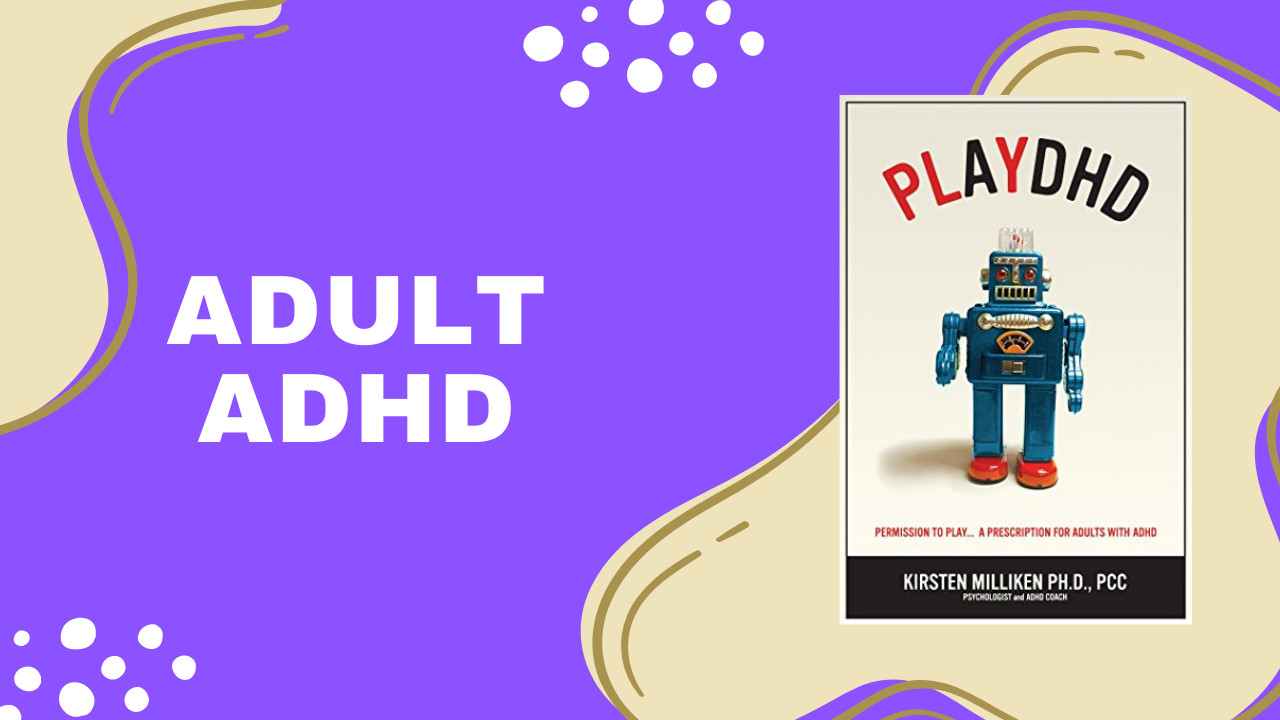While ADHD has been recognized in children for a while now, it’s a fairly recent recognition that it extends into adulthood for many. This realization is where Kirsten Miliken positions PlayDHD to help by proposing that the best non-medication way to deal with ADHD in adults is to introduce more play into their lives1.
Miliken is an ADHD counsellor2 that is using research, and her years of practice, to bring readers strategies for adults to turn mundane tasks that all adults have to perform, into something fun with play. By turning these tasks into play, we can achieve a better state of flow and have more fulfilled lives.
Early on Miliken does caution us that we shouldn’t let labels define us3, they are merely a starting point to understand how we can best operate in the world. She also reminds us that no two brains are the same and ADHD just happens to be a difference that has a label4.
I’d add to that, it’s one that society has currently decided is not suitable because a worker won’t sit as long doing exactly what they’re told. That doesn’t fit with the economics that most countries operate under as they push GDP as the primary measure of success.
Why Play
Research shows that ADHD is related to a lack of dopamine5. It could be that the ADHD brain doesn’t produce enough dopamine, or that the dopamine receptors aren’t taking enough dopamine in. By using play to activate the reward centers of the brain, we can help induce more dopamine production or uptake because the task is now fun and worth it for our brains to divert resources to6.
With well-activated dopamine centers, ADHD brains can focus for long periods on one item7. They can go much deeper than others, which sounds like a heightened state of mental flow instead of a disorder8.
Miliken says that people with ADHD are generally brilliant9, they just may not fit into the narrow view the world has for a “productive” society member. The goal is to use play to make those tasks we have to do easier.
What is Your Play Type
If you’re interested in what this whole play thing is about then Miliken defines 9 different play types that you may fit into Loc 1241. I think that I fit into the joker, who finds odd relationships and fun in most of life, and the kinesthete, who pushes their body to the limit and has adventures. There are many others that would cover performers, authors and readers, artists, and almost any profession.
The biggest benefit to looking at the play types and putting a name to your preference is likely that it will help you look at the things you have to do from a new angle which will make it easier to add play to your life.
When you’re faced with a task you don’t like, you likely just feel bored by the task10. It’s not challenging enough or fun. Using your play type as a guide to make the work fun will help you get it done without fighting yourself every step of the way.
Should You Read PlayDHD by Kirsten Miliken?
I generally like a bit more citation in a book like this, but Miliken has a decent writing style that feels playful. I found her digressions, which were meant to appear as the ADHD brain interrupting the flow, distracting from the content at hand.
Yet, I enjoyed the book and found it helpful. I saw much of myself in the ADHD behaviour she pointed out. In high school, I’d have classes I’d be failing and classes I’d have 100% in. Some years they’d switch as teachers that engaged me changed.
I saw lots of myself in the book and realized that I regularly engage in play to make tasks easier to focus on.
If you’ve wondered about the role of play in managing the tasks you have to do, then PlayDHD is a decent book to read. It’s short and fairly densely packed with information.
